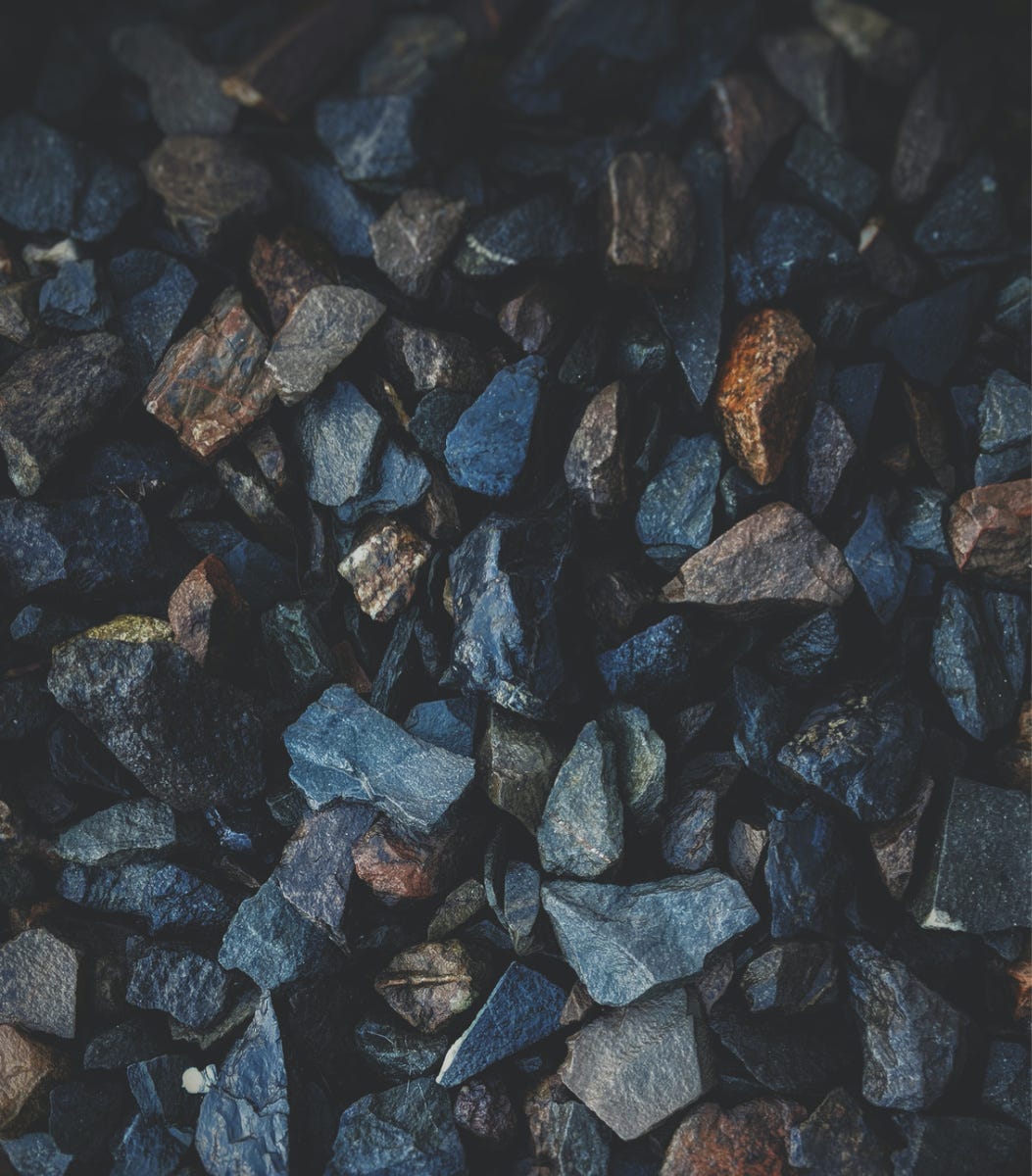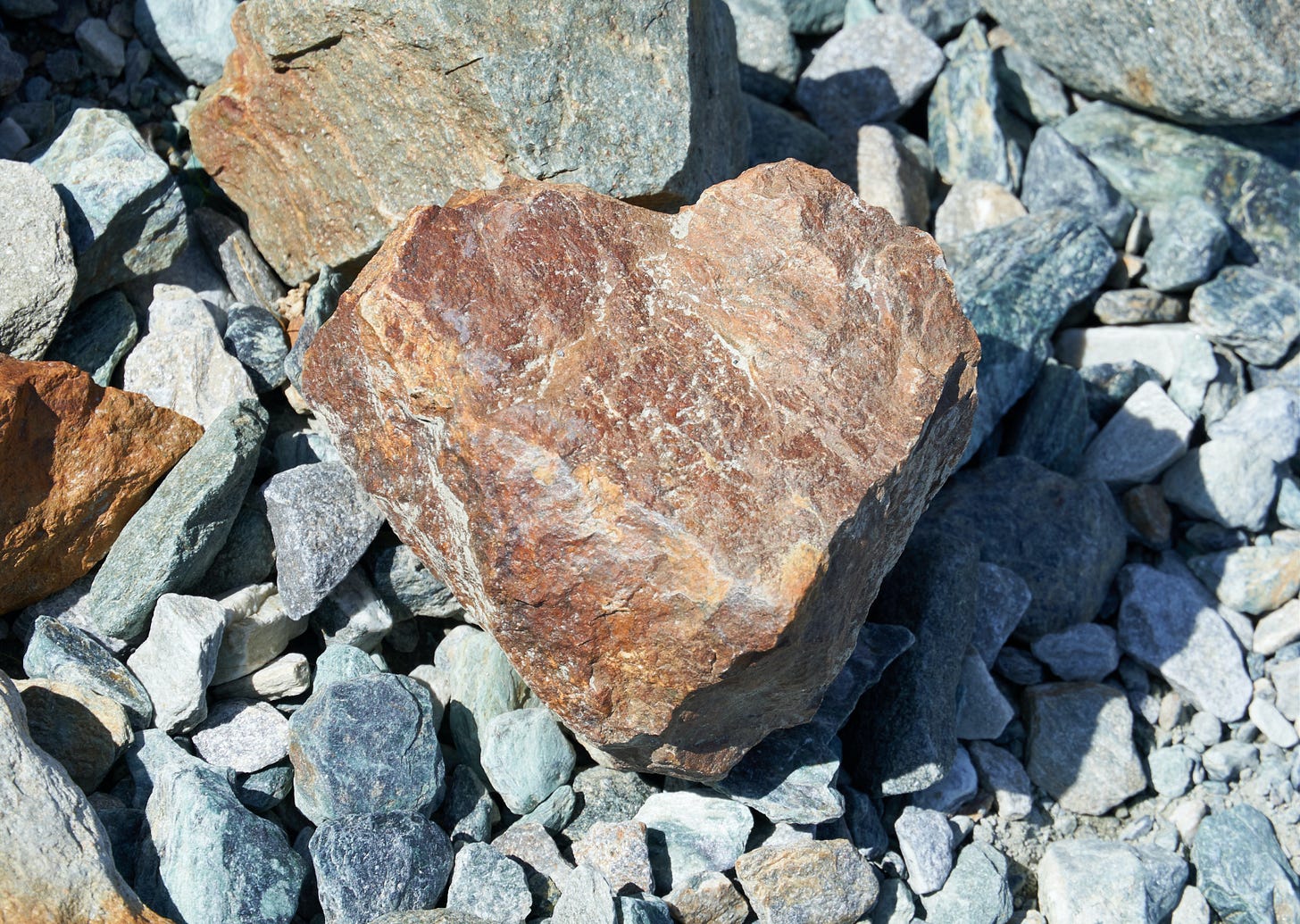Shattered glass, ebbing hope and giving mountains.
You’ve heard me mention (blabber about) (rave about) (go on and on about) her books several times over the years, so it’s truly a joy to have Amanda Dykes, one of my all-time favorite writers, sharing here today. Her debut novel, Whose Waves These Are, is easily one of my favorite fiction reads. If you’re weighed down today, carefully walking through shards of what has shattered, or waiting in anticipation for what’s to come—these words from Amanda, written just for us, are especially for you.
P.S. If you’ve read WWTA, please tell me the mention of rocks below brings a knowing smile to your face, too? It’s hard to look at rocks or waves the same now, right?! Here’s to noticing the arrival of hope in “the growings.” 💛
I have a strange hobby with a strange history. Long story short, I ended up with a little rectangle of land that needed something to grow in it, in order to choke the weeds out. The only thing that had done well there over the years was this plucky little patch of strawberries. So one day I thought—why not just go all-in? Who needs ten thousand types of vegetables in a vegetable garden? Let’s have a berry garden.
Then came the building of the berry beds. I needed rocks for building small retaining walls, and paving the paths in flat fieldstone-like cobbles. Happily, I live near the base of a great big mountain range, and there’s a beautiful road that snakes along the foothills. If you pay attention, you can learn pretty quickly where the caches of “good rocks” are—the ones that are big enough to be useful, small enough to lift, and nice and flat on at least one side.
This is the second summer that I’m harvesting rocks from the mountainside. Sometimes I make a few trips a week, sometimes I just stop when I’m on that road anyway—rain or shine, heels or flats, dress or jeans, whatever state I’m in. There’s always time to grab rocks.
Over time, I began to notice something: I wasn’t the only one who was doing things with those rocks. I was pulling them from this reaching mountain, which seems to give itself to us, here on the valley floor. Giving us its shade, giving us its majesty, giving us even bits of itself in these rocks, to go build things. Tumbling rocks down after blizzards and gales, down canyon paths to their resting place, ready to be gleaned. Sometimes I’ll spot someone pulled over, picking through rubble, and I’ll think, “Hello, fellow rock harvester” and wonder what they’re building. A berry patch, like me? A pathway, to transform thorny ground into a place to walk? A castle, perhaps? (A girl can dream, right?)
But also—among these caches of rocks, there are shards of glass. Glass in green, glass in brown, glass that’s shattered, glass still in bottleneck shape. People have tossed their empty bottles over the years as they’ve traversed this rock-laden road.
And it struck me—they’re the same rocks.
The rocks that shattered these glasses are also the rocks giving themselves, offering themselves, to be taken away and used to build up and grow life.
You already see where this is going, don’t you? We have our own hard terrain in this life—piles of rubble, rockslides of grief. The corners are sharp, the edges can cut, and they most certainly can shatter a vessel to pieces . . . But when gentled into the grip of hands accustomed to building, something miraculous happens. What could have shattered begins to be built into something safe. A refuge. A place where tender life can learn to grow.
And isn’t that the way of our broken places, in the hands of a God who is our Cornerstone? When the Cornerstone is entrusted with our broken stones, He cradles them. He works them with care, patience, tenderness and strength until He has painstakingly, mercifully constructed them into something safe and good, growing and true. A place that can give life, where life had once seemed shattered.
Whatever your jagged-edged stones may be today, friends—whether grief, loss, disappointment, the view of an ebbing side of hope . . . this is hard terrain. I don’t gloss over that, not one bit—and as I write this, I’m praying strength around your hearts as you carry these things. And praying, too, that nail-scarred hands, the ones unafraid of jagged edges, will wrap around your grip today, lift the weight, pull the stones close . . . and build something good, something growing, something true. A place that can give life.
God is in the business of transforming. Healing. Redeeming. He did it on the cross and He is doing it right now, in our piles of rubble or hurt. He is with you in this, right this moment. You are not alone. You do not have to hold that weight. And whatever shattering may have met you . . . He will gather each piece and hold you close. Take heart, friend.
“…my God, my rock, in whom I take refuge, my shield, and the horn of my salvation, my stronghold and my refuge, my savior; you save me…” 2 Samuel 22:3
My “official” public review of WWTA, with apologies to in-person friends who have heard the extended version several times because I just keep talking about it.
I didn't review Whose Waves These Are when I read it four years ago... not because the book didn't deserve a review, but because I couldn't find words that would be adequate. This debut is stunning, and four years later I still find myself thinking about the powerful, lyrical, beautiful story of home and hope.
This review won't do it justice, but after reading it again, I'll simply say that if you were to tell me that Ansel-by-the-Sea is a real place I could visit, that I could take a tour and meet Annie, I’d know in my mind it couldn’t possibly be true (hello, fiction) but I’d want so much to be wrong. The setting itself is a character, and by the time you reach the final page, the book somehow feels like a friend.
Though it moves back and forth between two time periods, I found that I never wanted to leave one for the other . . . as in, I was so invested in the story of that page I wanted it to continue. What more could you ask for, really, than storytelling so rich that it was true of both timelines, each drawing the reader in time and again. I laughed out loud and reached for Kleenex and read sentences out loud, appreciating the way Amanda Dykes turns a phrase, bringing words to life. (One small example: “When Abner talks, he stretches questions as far as they can get.”)
If I could give this more than five stars, I would.
So, I guess you could say I liked it.
😉
The amount of excited I am to chat with Amanda during the June author call for All The Things is VERY MUCH. Very much excited, thank you.
Think of Good Things (what you’re subscribed to, hello there 👋) as an umbrella with Thursday Things/blog posts + All The Things underneath. Everyone receives blog posts & Thursday Things (totally free), but if you want all the extras (or simply want to support my writing (major major thank you)), there’s a paid portion with a lot more of the good stuff—surprise gifts in the mail, giveaways, access to a private All The Things Instagram account, digital prints and lock screens, private Zoom calls with authors and friends, and first-word news about writing/life updates.
We’d love to have you there!
Our call with Amanda is a week from Thursday, but if you’re seeing this after the fact, you can access the replay within the private All The Things portion of the site. :)
P.s. Just for fun because summer is blazing hot and needs all the extra happy it can get—a summer sale to carry you through the seasons:
This article is written by Amanda Dykes, winner of the 2020 Christy Award Book of the Year, a Booklist 2019 Top Ten Romance debut, and the winner of an INSPY award for her debut novel, Whose Waves These Are. She’s also the author of Set the Stars Alight (a Christy Award finalist), Yours is the Night (recipient of the Kipp Award), All the Lost Places, and three novellas. A former English teacher, Amanda is a drinker of tea, dweller of redemption, and spinner of hope-filled tales who spends most days chasing wonder and words with her family. Find her online at amandadykes.com.





